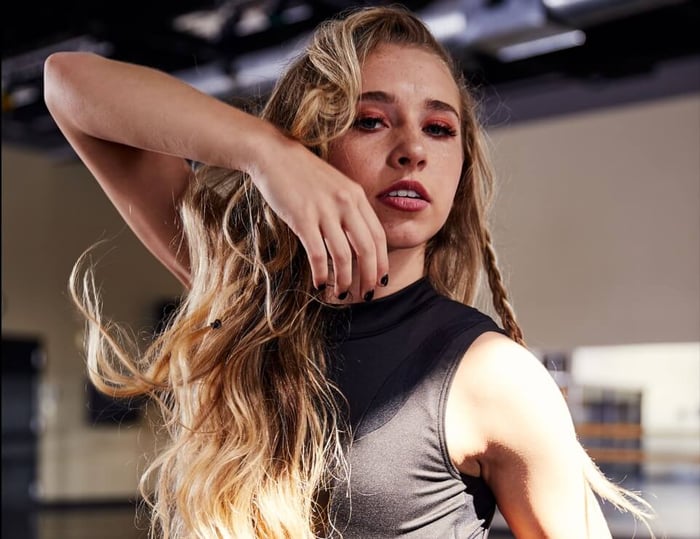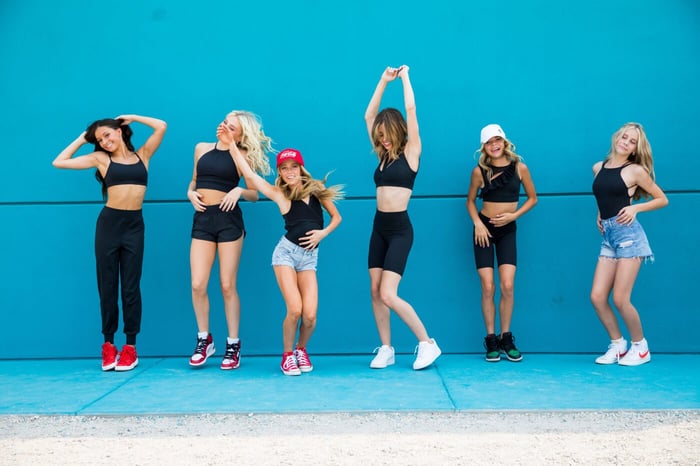No dancer wants to injure themselves, but it does happen sometimes. When you think about all you’re asking your body to do (turn on tiptoes, jump into the splits, and even flip through the air), you can understand why some common dance injuries happen.
Fortunately, there are things any dancer can do to minimize the impact dance can have on your body so you can keep doing the moves you love, like the Running Man.
Let’s chat about 14 of the most common dance injuries, the causes of dance injuries, and how to prevent them. Our team at Jo+Jax is made up of dancers who know firsthand the risks of dance and how to stay safe so you can experience its overwhelming rewards.
The 14 Most Common Dance Injuries
Bumps and bruises are by far the most common dance injury, just like in any athletic endeavor. But since dancers are tough, they can handle it with grace and let the show go on.
But every sport (because dance is a sport, thankyouverymuch) comes with some risk of injury. For dance, these are the most common.
9 Short-Term Injuries
A short-term injury (acute) is sudden, severe pain in a specific part of the body. They are commonly the result of a trip, fall, impact, or quick movement. Sometimes they occur because of bad technique, but most often, they result from simple accidents.
1. Achilles Tendonitis
Inflammation and tightness of the Achilles tendon (the thick connecting tissue between the heel and the calf muscle) are caused by the strain of repetitive movement.
2. Ankle or Hip Impingement
A dancer can experience stiffness, swelling, or a dull ache in the front or back of the ankle or in the hip or groin. This limits range of motion because the bones are squishing the surrounding tissues.
3. Dislocation
A partial or total loss of connection between the two surfaces of a joint can cause deformity, severe pain, and total disability until the dislocation is set. This is an emergency since the arteries or nerves can be damaged. For this reason, the dancer should immediately be taken to the nearest medical center.
4. Foot and Ankle Sprain
A sprain happens when your ligaments are overstretched or torn. This causes bruising, swelling, inflammation, tenderness, and the inability to put weight on the foot.
5. Fracture
A bone break is generally the result of a direct trauma impact, and a stress fracture is caused by repetitive minor injuries. Both are considered severe injuries that need complete immobilization to heal.
6. Muscle Spasm
This is an involuntary and sustained muscle contraction that decreases the mobility and efficiency of surrounding joints and muscles.
7. Pulled or Torn Muscles
If a muscle is stretched too far, it can pull or tear the fibers, which can be painful. It often feels like a snap or pop.
8. Shin Splints
A dancer is probably experiencing shin splints (also called tibial stress syndrome) when the tibia bone in the shin and surrounding muscles get irritated and inflamed. This causes shin pain, particularly when transferring weight from one leg to another (like when jumping).
9. Trigger Toe
Trigger toe happens when the tendon of the big toe (usually) is damaged over time. Eventually, the tendon thickens and isn’t able to move through movements smoothly and instead becomes “locked.” It can feel like a click.
5 Long-Term Injuries
A long-term (chronic) injury may result from many years of wear and tear. Sometimes this is because of bad technique, but other times you can suffer a chronic injury due to regularly pushing the limits of your body.
Chronic injuries are less common and typically occur only after many years of dance, but we listed them so you can be aware.
1. Snapping Hip Syndrome
This injury causes a snapping or popping noise to come from the hip and happens when the tendon rubs over a bone in the pelvis. A hip pop happens frequently with dancers and is not usually a cause for concern. But if it becomes more consistent and irritating and the problem is ignored, it can become unbearable down the road.
2. Osteoarthritis
This is a type of arthritis that develops when the tissue at the ends of the bones wears down. Once the joint bones start to rub against each other, a dancer will experience long-term stiffness, swelling, tenderness, and a limited range of motion. Osteoarthritis is irreversible.
3. Overload Syndromes
Also known as chronic fatigue syndrome, overload syndromes don’t necessarily cause damage, but they do lead to swelling, pain, loss of elasticity, and diminished physical capabilities.
4. Patellofemoral Pain Syndrome
The cartilage and joint behind the kneecap can get damaged with consistent misalignment. At first, there may only be pain, but surgery might be required if it becomes more serious.
5. Vascular Syndromes
These are not frequent, but they can be a consequence of a single major trauma or multiple minor traumas. It occurs when the arteries, veins, and lymphatic vessels swell and get obstructed, causing congestion in the system and a decrease in circulation.
Causes of Dance Injuries
There are a variety of reasons a dancer may get injured. Here are some of the most common causes:
- Not warming up and cooling down between dances
- Bouncing in a stretch or pushing a stretch too far
- Having poor alignment
- Not resting or taking enough breaks
- Trying pointe or heel work before you’re ready
- Rolling the foot or ankle while running into position
- Collapsing heavily out of relevé, pirouettes, or fouettés
- Forcing turnout instead of maintaining natural ball socket ability
- Excessive foot pronation
- Not rising high enough onto the ball of the foot
- Overuse of a particular body part
- Not lowering the heels fully when landing jumps
- Repeatedly forcing the heels to stay on the floor
- Putting weight too far back on the heels while gripping the floor with the toes
- Dancing on concrete, other very hard surfaces, or a raked (sloped) stage
- Clawing your toes to maintain balance
- Relying on hip flexors instead of the core to hold the leg out front or to the side
- Having previous injuries
Preventing Common Dance Injuries
A dance injury can make it hard to stay motivated, especially during dance competition season. Always, the best strategy is to prevent injuries from happening in the first place. Here are a bunch of ways to help your body stay safe from harm:
- Train with a knowledgeable teacher.
- Don’t try new moves before you’re ready.
- Stretch before doing any dance.
- Wait for skeletal maturity (usually around age 14 for girls) before putting extraneous strain on the bones.
- Balance stretching with strength training.
- See a podiatrist to make sure foot anatomy doesn’t cause any problems.
- Wear appropriate footwear that isn’t damaged or ill-fitting.
- Wear compression leggings or socks.
- Strengthen the foot and ankle muscles using a resistance band.
- Use a foam roller to reduce muscle tightness.
- Slow down or stop dancing when you begin to feel overtired.
- Do a variety of low-impact exercises (like swimming).
- Don’t dance on surfaces without shock absorption.
- Dip legs in an ice bath after dancing on a raked stage.
- Lengthen limbs away from the core.
- Take breaks and get the proper amount of sleep each night.
- Stay hydrated.
Get Your Jo+Jax Gear
It can seem a little scary to read about these common dance injuries, but trust us—the sensational benefits of dance are too good to pass up. Between the physical, emotional, and social benefits you get from class, the rewards are well worth the relatively low risk.
So put on your uni and get to work perfecting your technique so you can dance worry-free for many years to come.
Shop your favorite Jo+Jax gear and register for an account to make the purchase process faster and easier!




